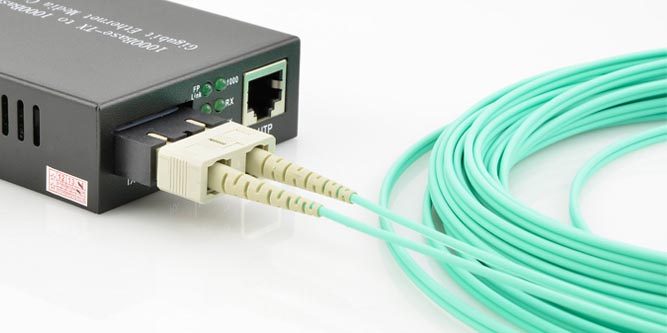
An Ethernet to Fiber Converter is a device that converts electrical signals from Ethernet cables into optical signals that can be carried over fiber optic cables. Making the transition from a copper-based Ethernet network to a fiber-based network can seem daunting; however, it doesn’t have to be. Thanks to the advancements in technology, networking in your workplace is easier than ever before.
One of the most effective ways to transition from an Ethernet connection to a fiber connection is by using an Ethernet-to-Fiber converter. In this blog post, we will discuss what an Ethernet-to-Fiber converter is, how it works, and why you should consider making the switch. With a few simple steps, you can quickly and easily make the transition and upgrade your network for better performance and reliability.
What is an Ethernet to Fiber Converter?
This type of fiber media converter is used to connect devices that use different types of Ethernet cables, such as PCs and servers, to each other or to connect them to a fiber optic network.
The converter consists of two main components: an Ethernet transceiver and a fiber optic module. The transceiver converts the electrical signals from the Ethernet cable into optical signals that are then sent to the fiber optic module. The module converts the optical signals back into electrical signals and sends them to the receiving device.
There are two main types of Ethernet to Fiber Converters: active and passive. Active converters contain a power supply that powers the transceiver, while passive converters do not require a power source. Active converters are typically used in long-distance applications, while passive converters are typically used in shorter-distance applications.
The Different Types of Ethernet to Fiber Converters
Ethernet to fiber converters come in a few different types that each has its own advantages. The type of converter you’ll need will depend on your specific needs and application.
The first type of Ethernet-to-fiber converter is the media converter. Media converters are used to connect two different types of media, such as Ethernet and fiber optic cable. They can be used to convert signals from one type of cable to another, or they can be used to extend the reach of a signal by amplifying it.
The second type of Ethernet-to-fiber converter is the protocol converter. Protocol converters are used to connect two devices that use different protocols, such as Ethernet and Fiber Channels. Protocol converters can also be used to extend the reach of a signal by translating it into a format that can be read by the other device.
The third type of Ethernet-to-fiber converter is the transceiver. Transceivers are used to connect two devices that use the same protocol, but different mediums, such as Ethernet and WiFi. Transceivers can also be used to extend the reach of a signal by repeating it over a longer distance.
The fourth and final type of Ethernet-to-fiber converter is the repeater. Repeaters are used to amplify signals so they can travel over longer distances with less attenuation. They can also be used to clean up noisy signals so they can be received more clearly at their destination.
Pros and Cons of Ethernet to Fiber Converters
When it comes to choosing an Ethernet to Fiber converter, there are a few things you need to take into account. Below we outline the pros and cons of Ethernet to Fiber converters so that you can make an informed decision for your business.
PROS:
-Ethernet to fiber converters offer a high bandwidth solution that is scalable and future-proof.
-Ethernet-to-fiber converters offer increased security since they operate on a closed network.
-Ethernet-to-fiber converters are very reliable and offer low latency.
CONS:
-Ethernet to fiber converters can be expensive upfront.
-Installation of Ethernet to fiber converters can be complex.
Conclusion
Ethernet-to-fiber converters can be a great solution for people looking for reliable, high-speed internet connections. With the right knowledge and equipment, making the switch from Ethernet to fiber is easy. We hope this article helped you understand what you need to know about ethernet-to-fiber converters so that your transition goes as smoothly as possible. If you have any additional questions or concerns, please do not hesitate to contact us!

